Table of Contents
- How People Describe This Pain Pattern
- How You Activate and Intensify This Pain Pattern
- Self-Care – Getting Relief on Your Own
- Musculoskeletal Anatomy Behind Your Pain
- Therapy Notes for Massage and Bodywork
Want to skip ahead?
Here’s a link to my post about
getting relief on your own.
How People Describe This Pain Pattern
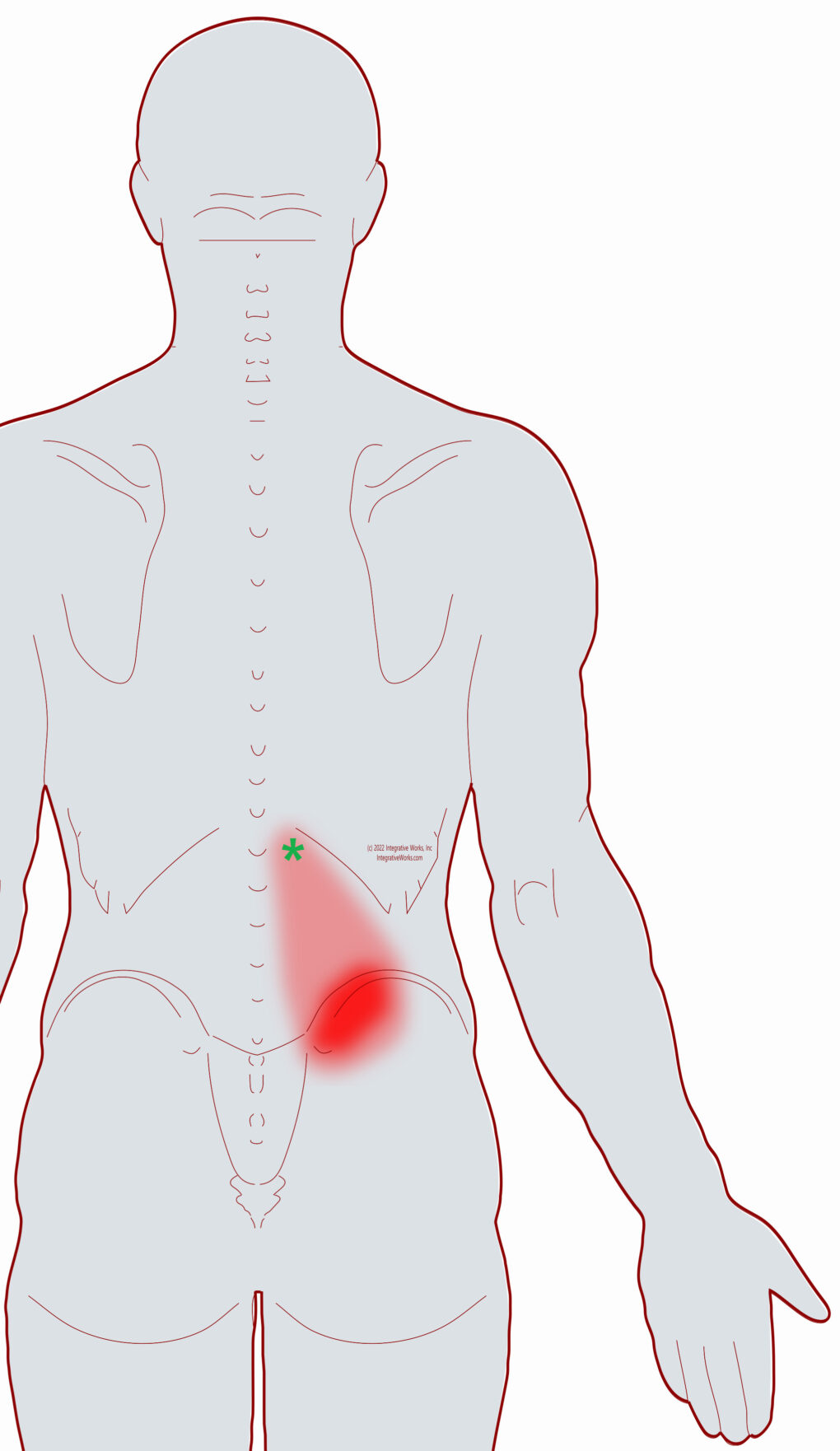
People reach back to touch the crest of their hip and say, “My low back hurts here.” Sometimes they trace up their low back and complain of tightness all the way up to be base of their ribs.
When this is mild, it seems stiff, tight, and achy. They are not as limited in their activity but need “to loosen” their low back.
On the other hand, when this is acute, they complain of symptoms related to other low back muscles. It can be fragile and interfere with daily activities for fear that Their “back may go out.”
I had a lot of problems with this in my 20s and would seek help on an emergency basis. I saw lots of chiropractors and visited the Emergency room a number of times. It would practically immobilize me for 2-3 days.
However, this is more common in people in their 40s, 50s, and above. At this point in development, the sacroiliac joint is fusing. Consequently, the joints of the low back work harder while bending forward. Additionally, the muscles closest to the spine become less responsive and take longer to recover. This further burdens this muscle, which lays in the layer above those intrinsic spine muscles.
How You Activate and Intensify This Pain Pattern
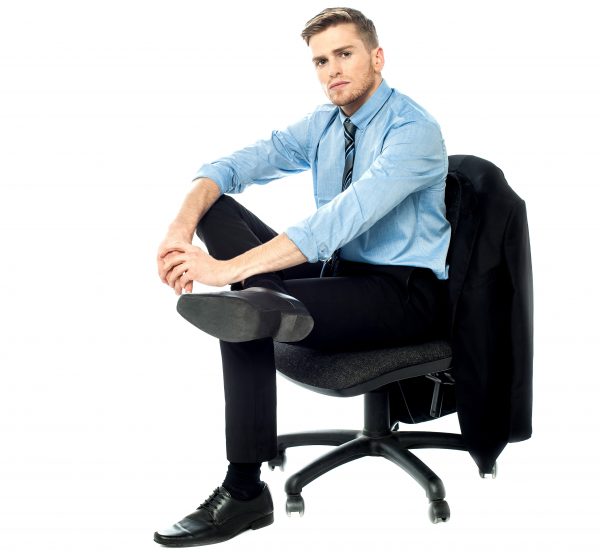
Of course, this can be injured in an accident but there are two ways that are most common.
Twist and Reach
In younger or more athletic bodies, this tends to get injured by reaching and twisting. For example, changing a high light bulb, painting the edge of the roof, or putting a serving dish back on a high shelf. Additionally, turning awkwardly with a shifting balance makes this injury more likely. The quick adjustments to posture recruit and overwork less active muscles and joints.
In more sedentary bodies, this activates by some unusual spring cleaning that involves “getting under things” and “giving them a good scrubbing.” Those activities also create more stress on these muscles that erect the spine.
Chronic Slouching
Often, in older, more sedentary bodies, a chronically slumped posture aggravates hip pain.. Leaning forward for long periods has two problems. First, it over-stretches low back muscles that are slow to recover. Secondly, the leaning indicates that your back fatigues and may need strengthening or support.
One More Thing…
As I mentioned earlier, I had lots of problems with this in my 20s. Changing my diet was the key to getting long-term changes. Certain foods irritate the gut lining and create changes in this area of the back where nerves connect to the internal organs. This is a subject worth exploring in another post. However, if you’ve had indigestion, constipation, or other irregularities in your digestion, they may be the key to lasting relief. It was for me and many of my clients.
The Musculoskeletal Anatomy Behind Your Pain
Musculoskeletal Anatomy
This post on anatomy contains standard information about the origin, insertion, function, and innervation of muscles. Additionally, it includes information on functional considerations and anomalies.
Find Related Posts
Anatomy posts have a grid of all related posts. This includes posts on pain patterns, self-care, therapy notes, NMT protocols, cranial techniques, and cases.
Getting Relief on Your Own
Clinically Proven
Self-Care Strategies
Self-Care Posts have common sections to make them easy to follow and understand:
- Activities to Avoid or Change
- Strategies for Quick Relief
- Stretches and Exercise for Longer-Lasting Relief
- Yoga Corner
Therapy Notes for Massage and Bodywork
Better Bodywork
Through Shared Expertise
Therapy Notes provide details for cranial, spinal, and local joint work. These notes also link to a traditional neuromuscular protocol.
By treating integrative components first, direct work on the muscle becomes less intense while providing longer-lasting relief.
Support Integrative Works to
stay independent
and produce great content.
You can subscribe to our community on Patreon. You will get links to free content and access to exclusive content not seen on this site. In addition, we will be posting anatomy illustrations, treatment notes, and sections from our manuals not found on this site. Thank you so much for being so supportive.
Cranio Cradle Cup
This mug has classic, colorful illustrations of the craniosacral system and vault hold #3. It makes a great gift and conversation piece.
Tony Preston has a practice in Atlanta, Georgia, where he sees clients. He has written materials and instructed classes since the mid-90s. This includes anatomy, trigger points, cranial, and neuromuscular.
Question? Comment? Typo?
integrativeworks@gmail.com
Follow us on Instagram

*This site is undergoing significant changes. We are reformatting and expanding the posts to make them easier to read. The result will also be more accessible and include more patterns with better self-care. Meanwhile, there may be formatting, content presentation, and readability inconsistencies. Until we get older posts updated, please excuse our mess.

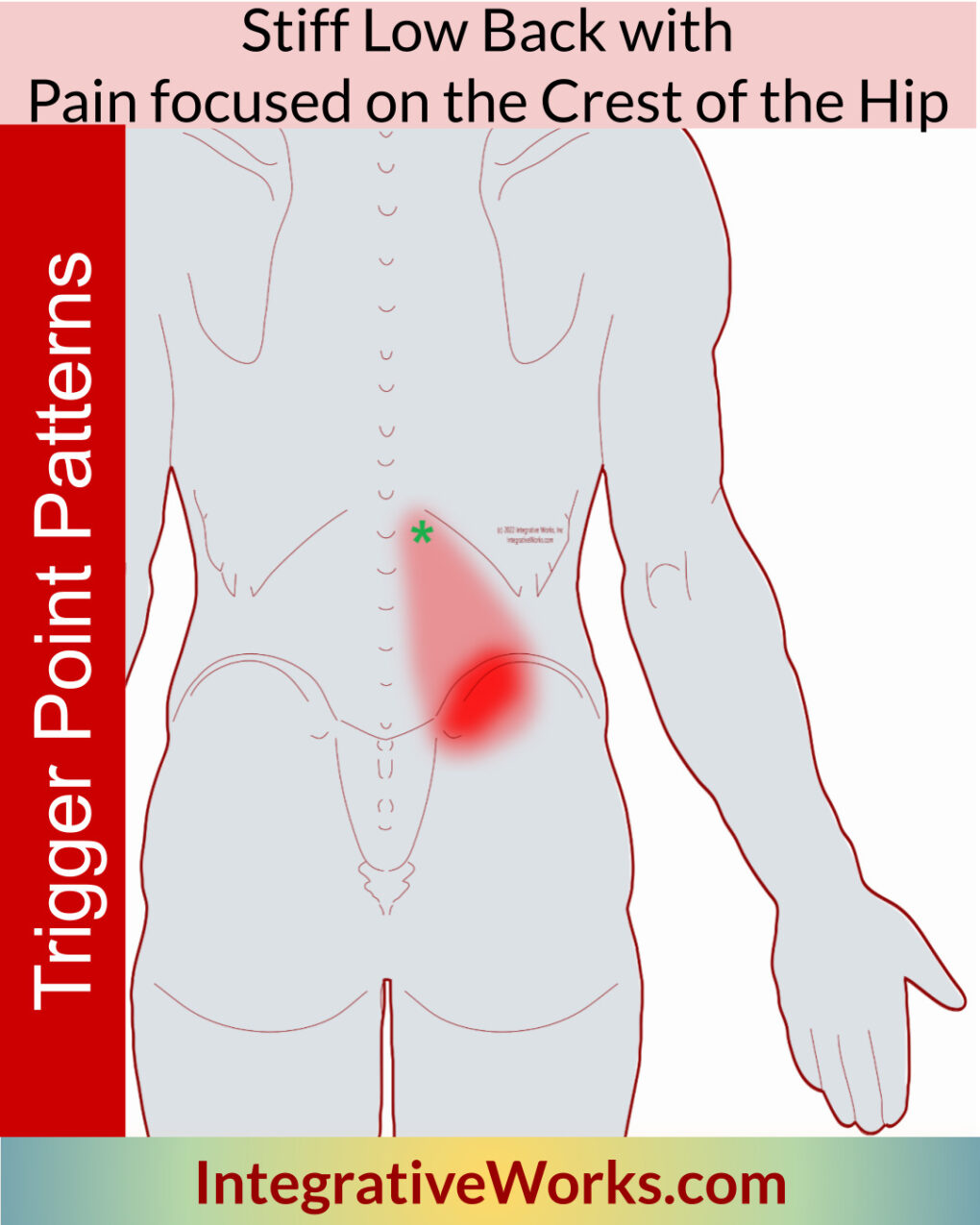
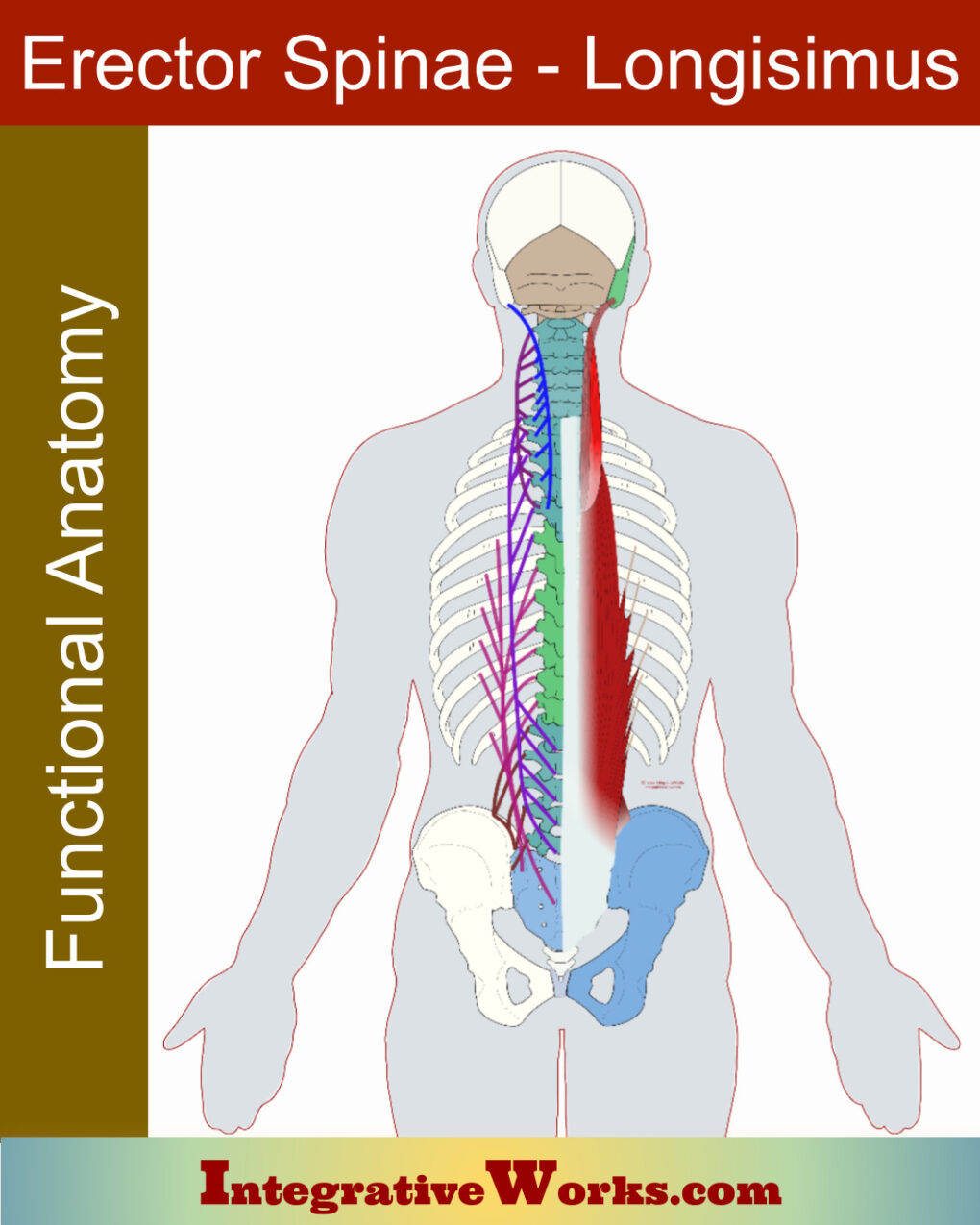
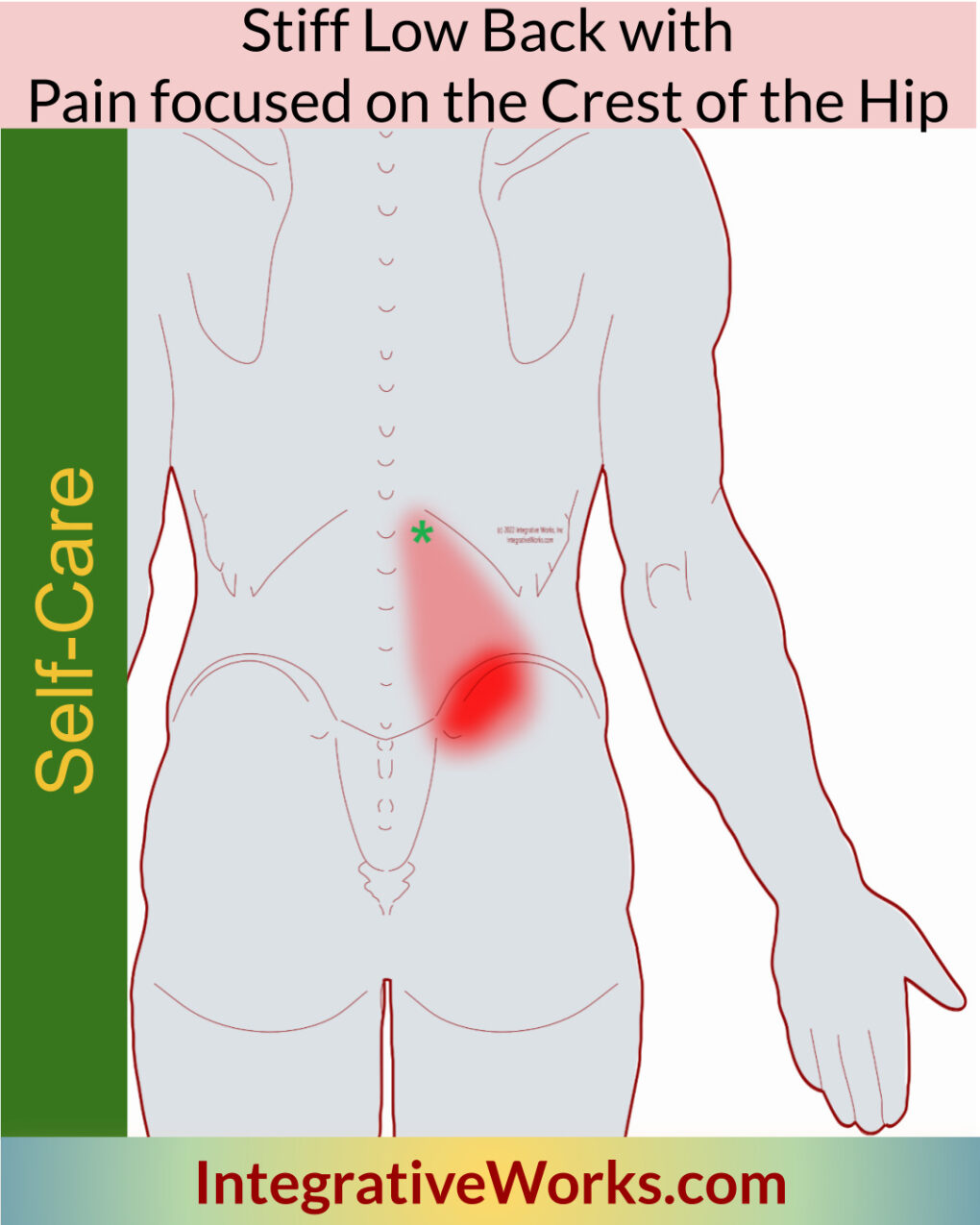
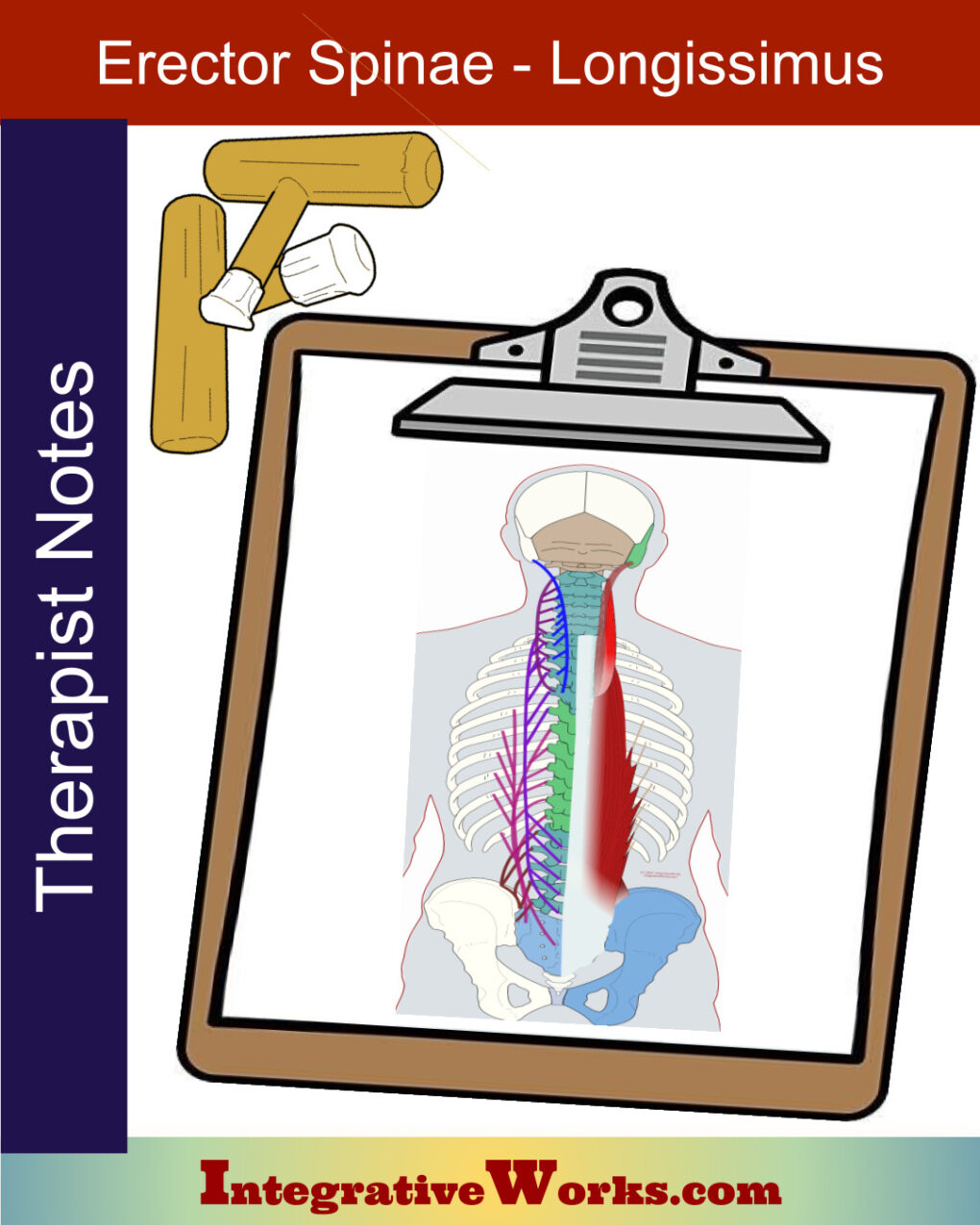
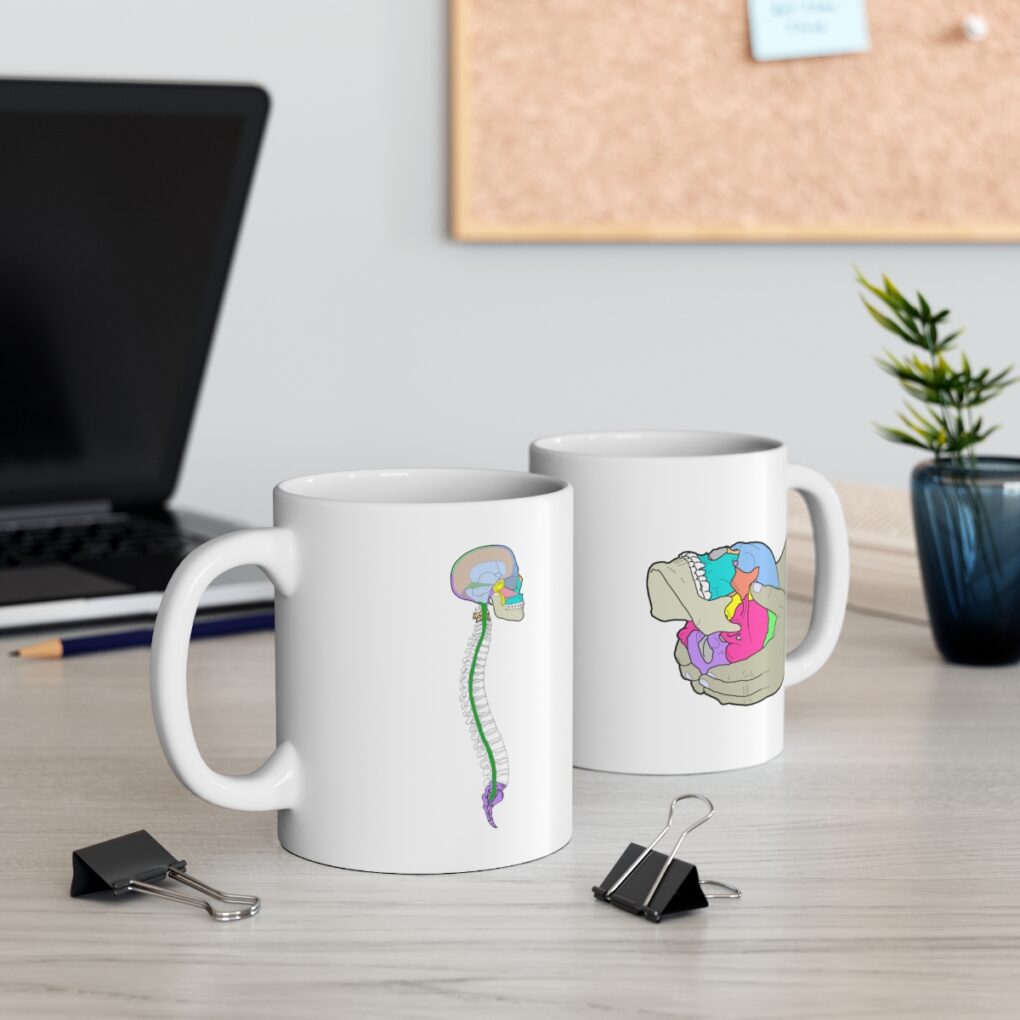
Pingback: Self-Care - Stiff Low Back Pain to the Crest of the Hip - Integrative Works